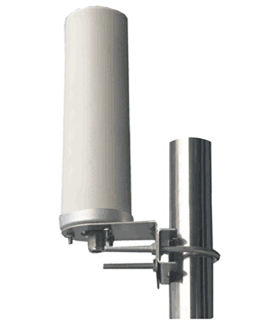

So using a couple of antenna setup to receive waves which are only vertically polarized is not the best setup. Th e radio waves might have left the transmitter mast nicely arranged vertically but after a few reflections then god knows what the orientation of the radio waves will be they certainly won't still be nice and vertical. What I mean is the radio waves are polarized up and down, this isn't very likely. But this assumes that the polarization of the signal is vertical. mounting the antenna with a gap between them of a few inches. One way this can be done is by a spatial separation of the antenna i.e. So the antenna receiver setup needs some physical aspect of the radio streams in order to differentiate them. However even with a dual antenna setup that doesn't mean the antenna is going to be any good! It comes down to polarization. So in simple terms that means two antenna connections. Since most routers or mifi devices now support dual stream you want to ensure that the antenna you choose has dual stream, MiMo functionality. As a general rule a dual antenna cost more than single antenna. Typically you will see antenna with single connections (so this is for 1x1 client devices) and antenna with dual connections (so this is for 2x2 client devices and also for 2x1 or 1x2 devices). One of the differences between these antenna is the number of antenna connections they have. If you look around you will see various types of LTE (4G) antenna being advertised at range of different prices. However in the intervening 5 or 6 years things have moved on and nearly all dongles, phones and routers now support dual stream capabilities. I first wrote this article back in 2013 and, at that time, the majority of LTE dongles and routers currently being supplied by the providers where lower cost 1x1 devices. So the number of streams a connection can support depends upon the capabilities of the service providers masts and also the radio capabilities of the client device. For a 2x2 service the client needs two antenna, and so on. For a 1x1 service then the client just needs a single antenna. In simple terms a client device needs to have an antenna for each radio stream. In the world of LTE you can have anything from 1x1 right up to 8x8 stream capability with all the possible mixes in between.
DIY OMNI DIRECTIONAL 4G ANTENNA BOOSTER DOWNLOAD
So, if a client supports 2x2 streams then it can generally support twice the upload and download speed of a 1x1 device. Like 11n WiFi, the terminology which denotes the number of streams is expressed as TxR where T is the number of transmit radio streams and R is the number of receive streams the connection can support. Just like 11n WiFi, the more streams of data the client can take then the faster the effective broadband. One of the ways that LTE gets it's performance improvements is to use multiple radio data streams to and from the end client. This is like 11n WiFi (which is also MiMo). I'm not going to go into it here but LTE is not 4G Wiki has several good articles for any readers that want to read about why LTE isn't 4G. telco/ISP/Government who don't fully understanding the technology but 4G sounds better to the end users. The 4G term has been jumped on by various bodies e.g. btw I'm going to stop using the term 4G LTE is NOT 4G. What many users do not understand is that LTE is a multi-stream radio, MiMo (multiple in/multiple out) service. Hopefully this short article will help explain the implications and considerations the user needs to examine before they can decide the best course of action. Often this can be due to poor reception however there are other factors that need to be understood which can affect the broadband speed. With 4G (LTE) services starting to come onto the UK market a lot of users are finding that they are achieving download speeds that are lower than they were expecting to get. To try and clarify factors that you need to consider when planning on using an external antenna for your 4G/LTE broadband connection.

Cables, Pigtails, Adapters & Connectors.


 0 kommentar(er)
0 kommentar(er)
